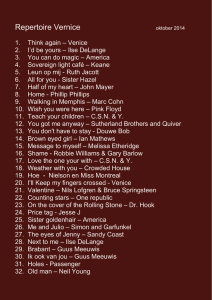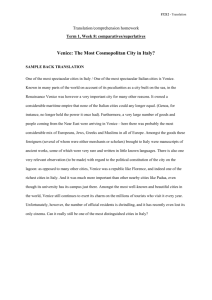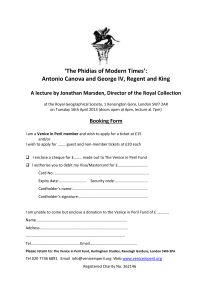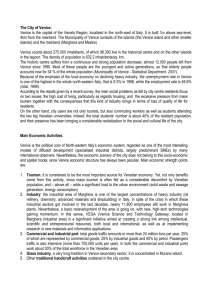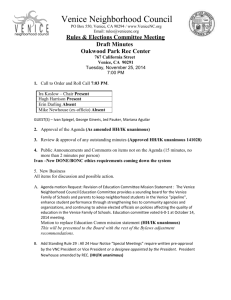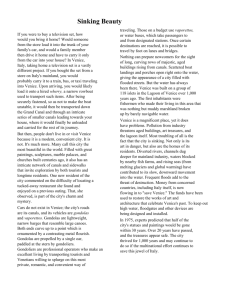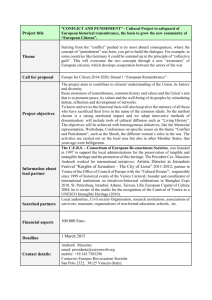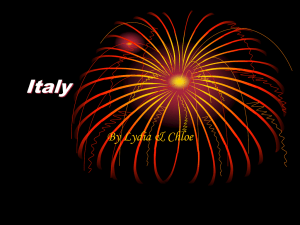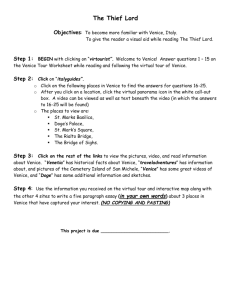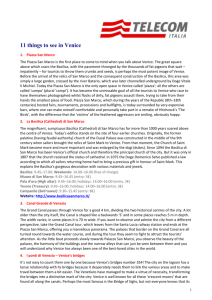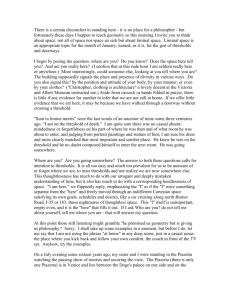Urban Sociology
advertisement
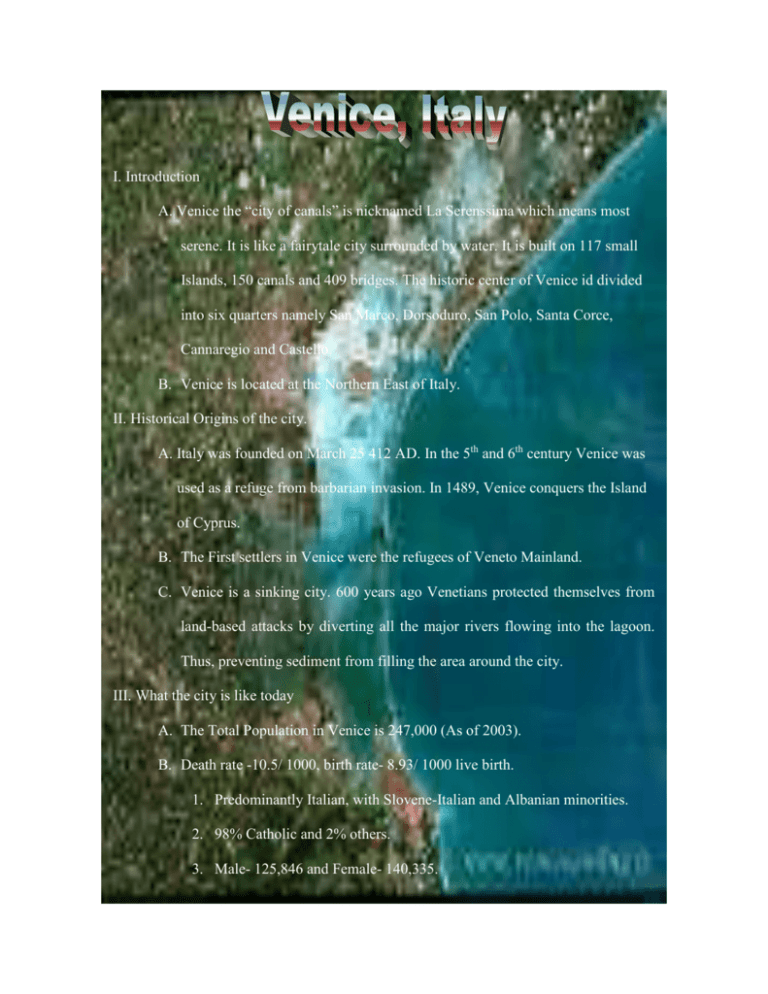
I. Introduction A. Venice the “city of canals” is nicknamed La Serenssima which means most serene. It is like a fairytale city surrounded by water. It is built on 117 small Islands, 150 canals and 409 bridges. The historic center of Venice id divided into six quarters namely San Marco, Dorsoduro, San Polo, Santa Corce, Cannaregio and Castello. B. Venice is located at the Northern East of Italy. II. Historical Origins of the city. A. Italy was founded on March 25 412 AD. In the 5th and 6th century Venice was used as a refuge from barbarian invasion. In 1489, Venice conquers the Island of Cyprus. B. The First settlers in Venice were the refugees of Veneto Mainland. C. Venice is a sinking city. 600 years ago Venetians protected themselves from land-based attacks by diverting all the major rivers flowing into the lagoon. Thus, preventing sediment from filling the area around the city. III. What the city is like today A. The Total Population in Venice is 247,000 (As of 2003). B. Death rate -10.5/ 1000, birth rate- 8.93/ 1000 live birth. 1. Predominantly Italian, with Slovene-Italian and Albanian minorities. 2. 98% Catholic and 2% others. 3. Male- 125,846 and Female- 140,335. 4. Unemployment 7%. IV. Present day quality of life A. Things are not much better for the local residents of Venice. The main tourist attraction places are very congested. Therefore, one can hardly move. and food are too much expensive, transport is too complicated and jobs are too scarce. B. Services from schools to hospitals are forced to move in the outskirts of the city to make way for more cost-efficient operations such as fastfood restaurant and souvenir shops. 1. The city’s university is located in Dorsoduro. Istituto Venezia is one of the popular language school and Scuola Internazionale d grafica d Venezia is the center for arts. 2. Pharmacies are qualified to give advice on minor ailments and to dispense prescription. One of the well known hospital in Venice is the Campo SS Giovannie Paolo 3. There are two main means of transportation in Venice. a. Waterbourne transport- it consist of water taxis and water buses (vaporetto and motoscafi) b. Pedestrian- land taxis and regular buses. C. Average January Temperature: 2 °C (36° F), Average July Temperature: 23.5° C (75° F) and Annual Rainfall: 854 mm ( 34.2 inches). D. Crime Statistics for Veneto Region 156,733 as of 2001. V. Primary Occupations & Industries Tourism is the main industry in Venice. Also commercial and maritime industry contributes in the economy in Venice. VI. Landmarks or Places that make the city well known Few of the enormous spectacular must see places in Venice are the Grand Canal, Rialto Bridge, Basilica Di San Marco, The bridge of Sighs, St. Marks Square, Tour of Doge’s Palace and Murano (the most famous lagoon). VII. Personal reflection of the city A. A better place to go on vacation because of the preserved cultural heritage and alluring physical environment. However, it is not a good place to live during your prime time. It is a good place for retirement. Venice is a serene, captivating and enchanting city.
